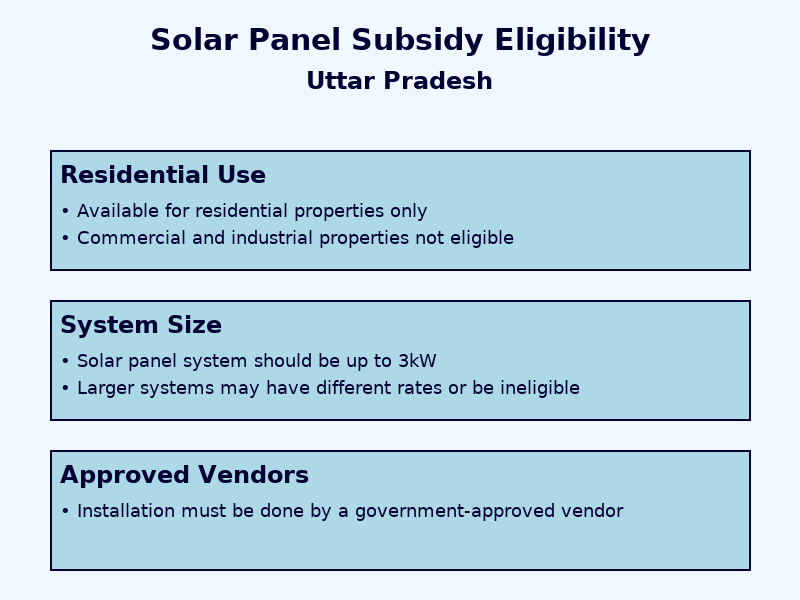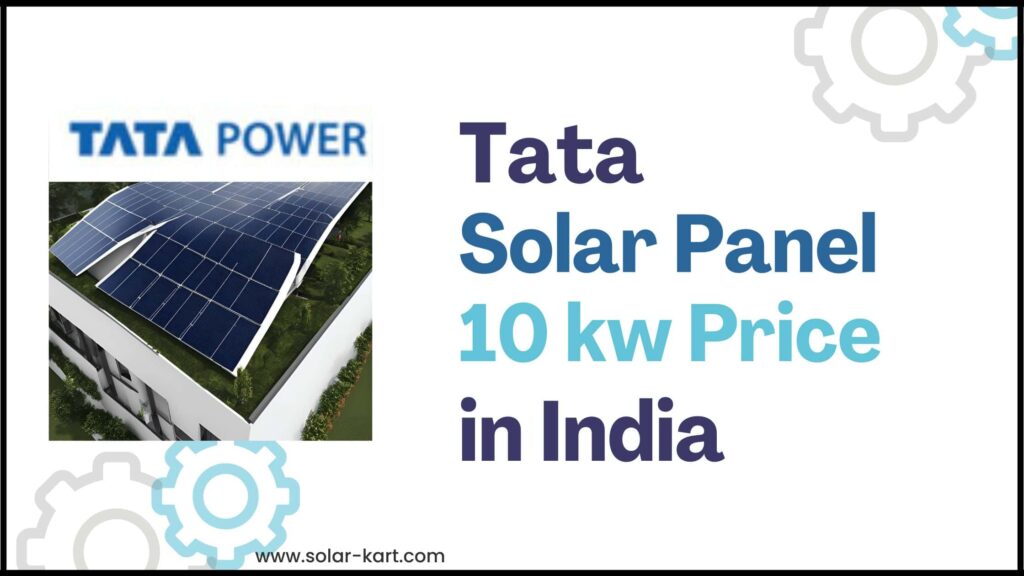This is really a smart move to get a solar energy for your home. It helps to save your electricity bills and on the other hand protect the environment. In Uttar Pradesh, government offers subsidies to make solar panels more affordable. So that each every family can buy solar panel to save their money and environment as well.
In this article we will guide you through the 3kW Solar Panel Price in Uttar Pradesh with Subsidy. If you are really looking for this then you must read this blog post completely. Where we describe each and every detail very clearly.
3kW Solar Panel Price in Uttar Pradesh with Subsidy
The cost of a 3kW solar panel system can vary. There are many factors like the brand, quality, and installation charges. Here are the approximate prices of the solar panel:
Before Subsidy
- Solar Panel Cost: ₹1,20,000
- Inverter and Other Equipment: ₹50,000
- Installation Charges: ₹30,000
- Total Cost: ₹2,00,000
After Subsidy
The Uttar Pradesh government offers a subsidy to make solar panels more affordable. As per the latest guidelines, the subsidy covers up to 40% for systems up to 3kW.
- Subsidy Amount: ₹80,000 (40% of ₹2,00,000)
- Total Cost After Subsidy: ₹1,20,000
How to Get the Subsidy
To get the subsidy for your solar panel system involves several steps. Here is a simple guide to help you through the process.
Step 1: Check Eligibility
Make sure that your solar panel system meets the eligibility criteria. Which is set by the Uttar Pradesh government. The system must be installed and certified by an authorized installer.
Step 2: Choose an Approved Vendor
Then you have to select a vendor approved by the government. This is very important to install by approved vendors. This will help to qualify for the subsidy.
Step 3: Apply for the Subsidy
- Visit the Official Website: Go to the official Uttar Pradesh solar subsidy portal.
- Register Your Details: Create an account and fill your details.
- Submit the Application: Complete the application form with your installation details and submit it.
Step 4: Inspection
After submission, an inspection will be scheduled. Officials will visit your site to verify the installation.
Step 5: Receive the Subsidy
Once the inspection is successful, the subsidy amount will be transferred to your bank account.
Eligibility:
To be eligible for the solar panel subsidy in Uttar Pradesh, you need to meet the following criteria:
- Residential Use: The subsidy is available for residential properties only. Commercial and industrial properties are not eligible.
- System Size: The solar panel system should be up to 3kW. Larger systems may have different subsidy rates or may not be eligible for the same subsidy.
- Approved Vendors: The installation must be done by a vendor approved by the Uttar Pradesh government. This ensures the quality and reliability of the installation.
- New Installation: The subsidy is only for new solar panel installations. Existing systems or upgrades to current systems do not qualify.
- Compliance with Standards: The solar panel system must meet the technical and safety standards set by the government.
- Net Metering: The system should be connected to the grid with net metering. This allows you to feed excess energy back to the grid and get credited for it.
- Proper Documentation: You must provide all required documents, such as proof of residence, installation certificate, and other necessary paperwork during the application process.
- Inspection: Your installation will be inspected by government officials to ensure it meets all requirements.
If you meet all these criteria then you will be qualify for the solar panel subsidy in Uttar Pradesh.

Necessary Documents:
To apply for the solar panel subsidy in Uttar Pradesh, you need to submit the following documents:
- Proof of Residence: Documents like Aadhaar Card, Voter ID, or a utility bill that proves your residence at the installation location.
- Identity Proof: A government-issued ID such as Aadhaar Card, Voter ID, Passport, or Driving License.
- Property Ownership Proof: Documents such as a property deed, property tax receipt, or sale agreement that prove you own the property, where the solar panels will be installed.
- Installation Certificate: A certificate from the approved vendor stating that the installation is complete and meets all required standards.
- Purchase Invoice: The invoice or bill from the vendor. Which describe the details about the cost of the solar panel system, inverter, and other components.
- Net Metering Agreement: A copy of the agreement signed with your electricity provider for net metering.
- Bank Details: Your bank account details for the transfer of the subsidy amount. This usually includes a canceled cheque or a bank passbook copy.
- Photographs: Photographs of the installed solar panel system, including the panels, inverter, and the net metering setup.
- Application Form: A completed subsidy application form, available on the official Uttar Pradesh solar subsidy portal.
- Inspection Report: The report from the government official who inspected your installation (this will be provided after the inspection).
Make sure all the documents are clear and legible to avoid delays in processing your subsidy application.
| Document | Required |
|---|---|
| Proof of Residence | Yes |
| Identity Proof | Yes |
| Property Ownership Proof | Yes |
| Installation Certificate | Yes |
| Purchase Invoice | Yes |
| Net Metering Agreement | Yes |
| Bank Details | Yes |
| Photographs | Yes |
| Application Form | Yes |
| Inspection Report | Yes |
This table shows all the documents required for the solar panel subsidy application.
Benefits of Installing a 3kW Solar Panel System
Cost Savings
A 3kW solar panel system can significantly reduce your electricity bills. It generates enough power for an average household.
Environmental Impact
Solar energy is clean and renewable. By using solar panels, you help to reduce greenhouse gas emissions.
Increased Property Value
Homes with solar panel systems have a higher property value. It is an attractive feature for potential buyers.
Low Maintenance
Solar panel systems require minimal maintenance. Regular cleaning and occasional inspections are usually enough.
Conclusion
So switching to solar energy in Uttar Pradesh is now more affordable thanks to government subsidies. A 3kW solar panel system costs around ₹2,00,000 before subsidy and ₹1,20,000 after subsidy. Follow the steps to apply for the subsidy and enjoy the benefits of clean, renewable energy.
For the latest updates and detailed information, always check the official Uttar Pradesh solar subsidy portal. By going solar, you not only save money but also contribute to a greener planet.



